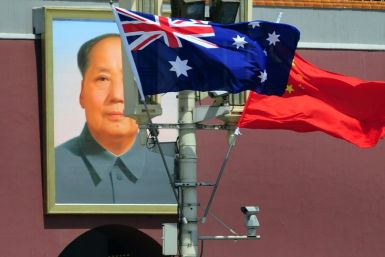Giant 'Warrior Wasp' Discovered with Jaws Longer Than its Legs
WARRIOR WASP: Males of the new species measure two and a half inches long, a giant in the wasp family.
Photo: Kathy Keatley Garvey)
It sounds like a creature envisioned in a B-grade horror movie: a giant, predatory wasp with jaws so large that they drag when it walks. But that's exactly what entomologist Lynn Kimsey of the University of California, Davis, encountered during a recent expedition to the remote Indonesian island of Sulawesi, according to the UC Davis Department of Entomology.
The new species, dubbed a "warrior wasp" due to its huge ninja-like mandibles, is a terrifying sight up close. It is also being called the "Komodo dragon" of the wasp family due to its intimidating size. Males can measure in at over two and a half inches, jaws included.
"Its jaws are so large that they wrap up either side of the head when closed. When the jaws are open they are actually longer than the male's front legs. I don't know how it can walk," noted Kimsey, who is also director at the Bohart Museum of Entomology. Luckily it prefers to dine on insects, but if threatened there's little doubt it could leave a sizeable mark on human flesh too.
Though the wasp belongs to the genus Dalara, Kimsey plans to name the species "Garuda" after the part-human, part-eagle mythical beast that is well-known as a national symbol in Indonesia.
The wasp was discovered in the Mekongga Mountains in southeastern Sulawesi, a little-explored Indonesian island between Borneo and New Guinea that Kimsey has called "one of the world's top three islands for biodiversity - that along with Australia and Madagascar."
Aside from wasps of legendary size, the island is also home to dwarf buffalo called anoa, palm civets, and colonial spider webs that can stretch for acres. Kimsey is part of a team of researchers who received a five-year, $4 million grant to study the island's rich biodiversity.
So far in her three trips to Sulawesi, she estimates that hundreds - maybe even thousands - of new species could be catalogued. Kimsey hopes that the discovery of the warrior wasp and other surprising new animals will help raise awareness of how unique and precious the region is.
"There's talk of forming a biosphere reserve to preserve this," she said. "There are so many rare and endangered species on Sulawesi that the world may never see."
Source: Mother Nature Network






